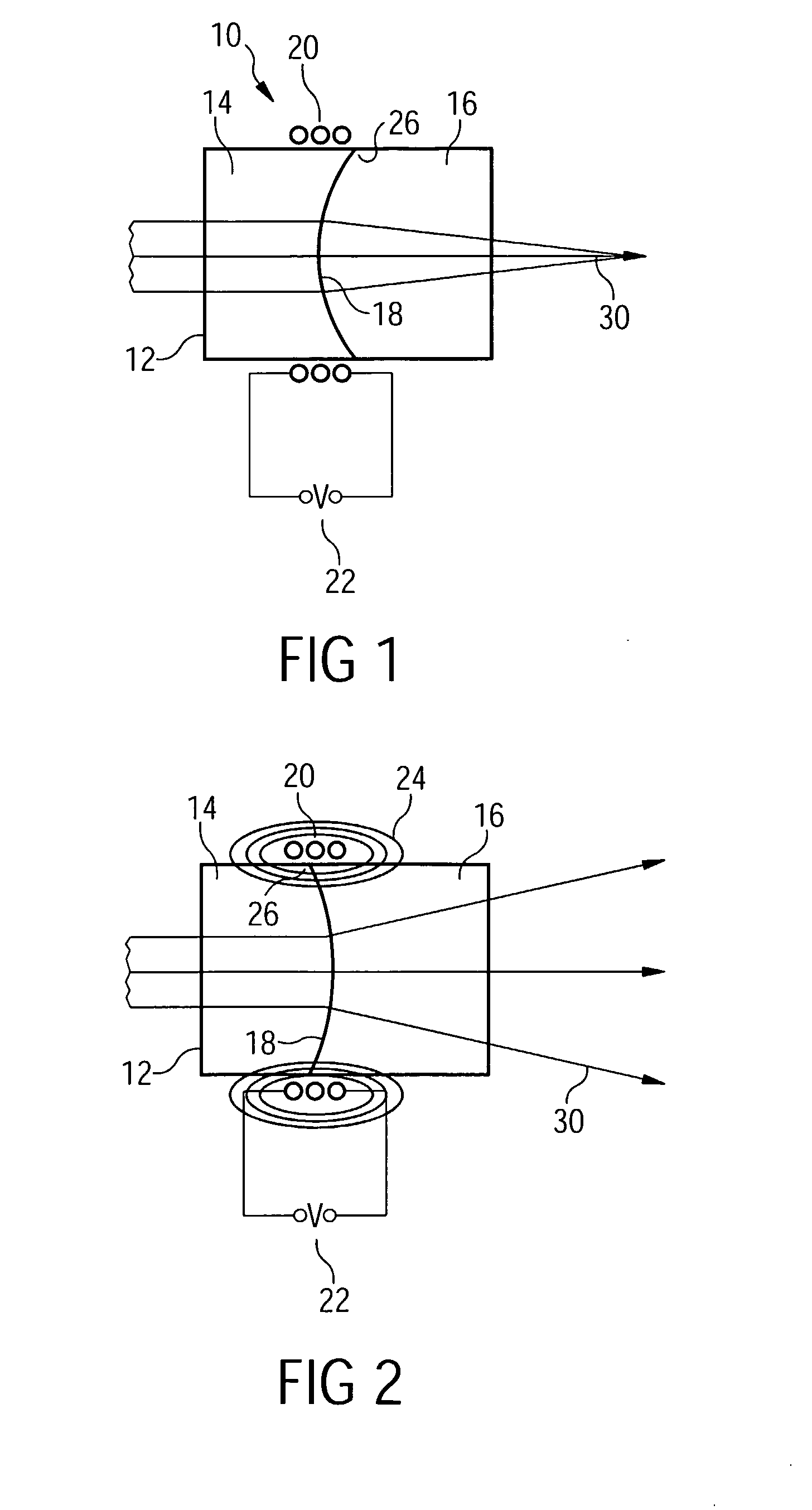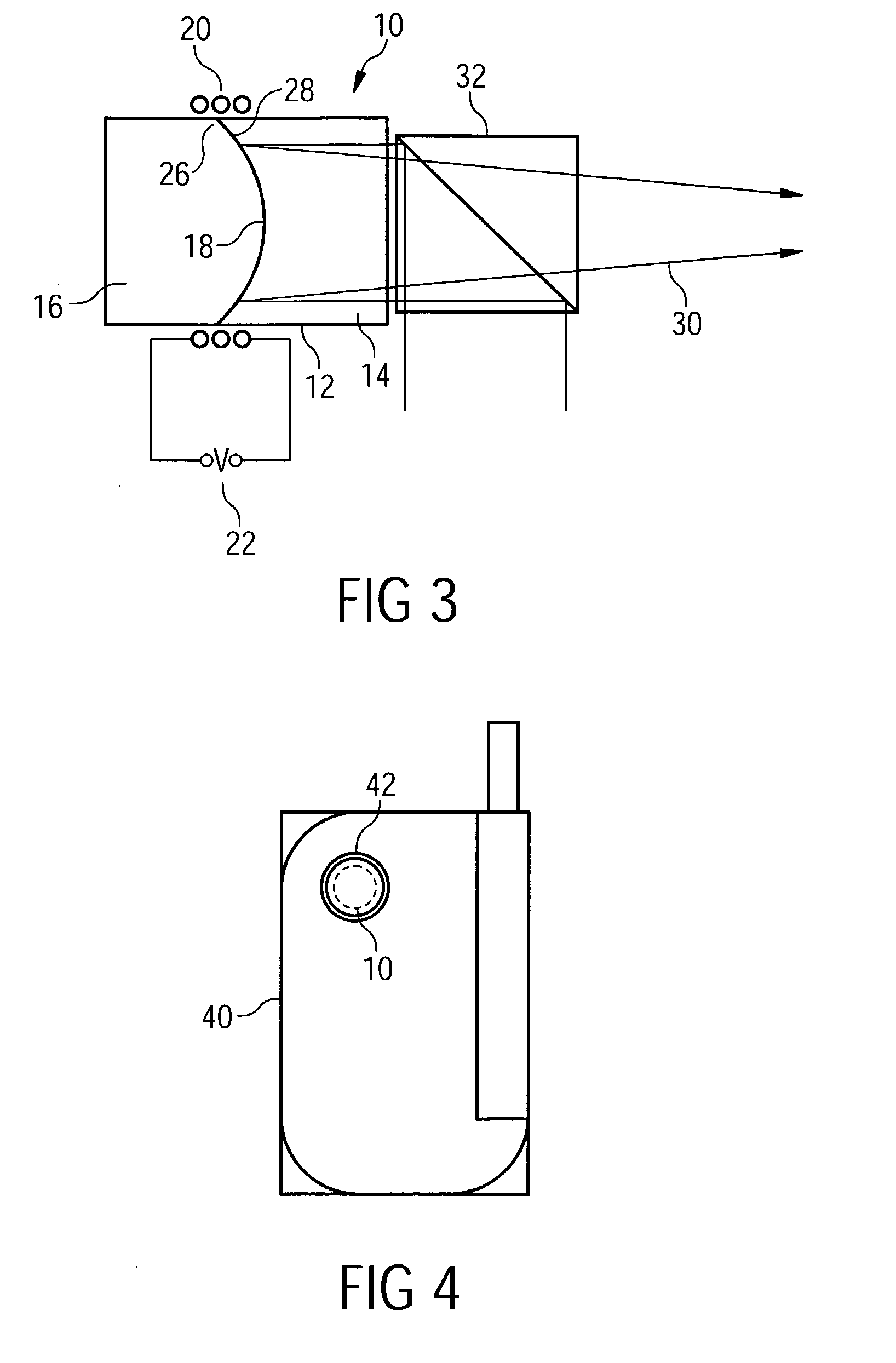Varible focus lens
a focus lens and variable technology, applied in the field of variable focus lenses, can solve the problems of large switching voltage needed to obtain a sufficient amount, and the effect of reducing the number of lenses, improving the reflectivity of the reflective lens, and different indices of refraction
- Summary
- Abstract
- Description
- Claims
- Application Information
AI Technical Summary
Benefits of technology
Problems solved by technology
Method used
Image
Examples
Embodiment Construction
[0026]FIG. 1 shows a variable focus lens in accordance with an embodiment of the present invention in schematic cross section in a first switching configuration. The cross section shows an axial cut through the lens 10. The lens 10 comprises a cylindrical fluid chamber 12. In the fluid chamber 12 a first fluid 14 and a second fluid 16 are provided, the second fluid being a ferrofluid. The fluids are non-miscible. Thus, at the interface between the fluids 14, 16, a meniscus 18 is formed. The inner wall of the fluid chamber 12 may be coated with a fluid contact layer (not shown), which reduces the hysteresis in the contact angle of the meniscus with the cylindrical wall of the fluid chamber 12. The fluid contact layer is preferably formed from an amorphous fluorocarbon such as Teflon™ AF1600 produced by Dupont™. The fluid contact layer has a preferred thickness of between 5 nm and 50 μm. The AF1600 coating may be produced by successive dip coating of the fluid chamber 12, which forms ...
PUM
 Login to View More
Login to View More Abstract
Description
Claims
Application Information
 Login to View More
Login to View More - R&D
- Intellectual Property
- Life Sciences
- Materials
- Tech Scout
- Unparalleled Data Quality
- Higher Quality Content
- 60% Fewer Hallucinations
Browse by: Latest US Patents, China's latest patents, Technical Efficacy Thesaurus, Application Domain, Technology Topic, Popular Technical Reports.
© 2025 PatSnap. All rights reserved.Legal|Privacy policy|Modern Slavery Act Transparency Statement|Sitemap|About US| Contact US: help@patsnap.com



